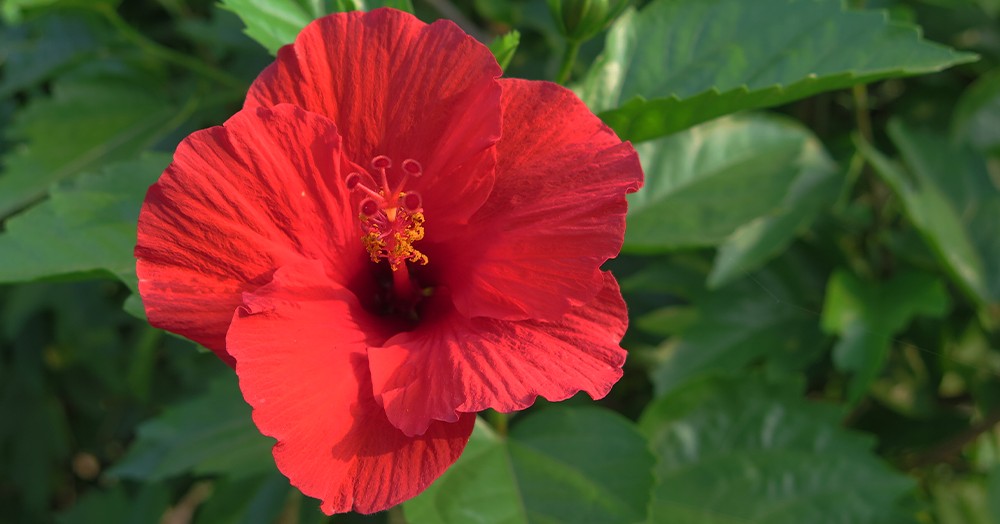Hibiscus flowers, with their vibrant colors and tropical allure, evoke images of serene beaches and exotic locales. Fortunately, cultivating these beauties isn’t limited to tropical climates. With the right knowledge and a little dedication, you can successfully grow hibiscus and enjoy their stunning blooms right in your own garden or home. This guide provides a comprehensive overview of hibiscus care, ensuring your plants thrive and reward you with repeated, breathtaking blossoms from spring through fall.
Container vs. Outdoor Hibiscus Planting: Choosing the Right Approach
Hibiscus plants are versatile and can flourish both in containers and directly in garden beds. Container gardening offers a significant advantage: portability. You can easily move your potted hibiscus to optimize sunlight exposure or to protect them from harsh weather conditions. As temperatures drop, bringing container hibiscus indoors for overwintering extends their lifespan beyond a single season.
Selecting the Ideal Container
When choosing a pot for your hibiscus, resist the urge to go too big. Hibiscus plants prefer slightly confined root spaces. Opt for a pot with adequate drainage holes that is appropriately sized for the plant, avoiding overly large containers. For indoor hibiscus, a sunny windowsill is perfect, but ensure the pot isn’t directly touching the glass, as intense sun can heat the windowpane and potentially scorch the foliage.
A vibrant red hibiscus flower in full bloom, showcasing its delicate petals and prominent stamen, highlighting the beauty of well-cared-for hibiscus plants.
Planting Hibiscus in Garden Beds
For planting hibiscus directly in your garden, spacing is crucial. Allow 2-3 feet between each plant to accommodate their summer growth. Before planting, consider a soil pH test. Hibiscus thrives in slightly acidic soil. If your garden soil is more alkaline, amend it with loam to create a more suitable environment.
Essential Hibiscus Care Tips for Thriving Plants
Mastering hibiscus care involves understanding their needs for water, sunlight, fertilization, and occasional pruning.
Watering Your Hibiscus: The Warm Water Rule
Always water hibiscus with lukewarm water. Cold water can shock the plant’s system. Using warm tap water in a watering can is ideal. During the active growing season in summer, frequent watering is necessary, but well-draining soil is equally important to prevent root rot. Container hibiscus generally require daily watering during warmer months, while garden hibiscus can be watered every other day. For indoor, overwintering hibiscus, allow the soil to dry out slightly between waterings.
Sunlight: Fueling Abundant Blooms
Hibiscus are sun-worshippers! They crave abundant direct sunlight, ideally 8 hours or more daily, to produce the most profuse blooms. While hibiscus can tolerate partial shade, it will result in fewer and less vibrant flowers. When planting in your garden, choose a location that is not shaded by trees or fences. The mobility of container hibiscus allows you to adjust their position to maximize sun exposure throughout the day.
A trio of hibiscus flowers in pink, yellow, and red, illustrating the diverse color palette of hibiscus blooms and their appeal in gardens.
Fertilizing for Continuous Blooming
Hibiscus benefit from regular fertilization, especially during their blooming period. Container hibiscus, due to nutrient leaching in pots, require more frequent feeding, approximately once a week. Garden hibiscus should be fertilized every two weeks during the blooming season. Avoid fertilizing during winter dormancy. A balanced, slow-release 14-14-14 fertilizer or one specifically formulated for hibiscus works well. Be cautious not to over-fertilize, as excessive phosphorus can be detrimental. Fertilizers enriched with magnesium and iron can enhance blooming.
Pruning for Shape and Future Blooms
Annual hibiscus varieties do not require pruning. However, for overwintered or cold-hardy hibiscus, spring pruning is beneficial. Prune to shape the plant and encourage new growth and more blooms. Remove about one-third of the branches, starting with weak or awkwardly growing stems, leaving at least 3-4 strong main branches.
Pest and Disease Management
Keep an eye out for common hibiscus pests such as aphids, spider mites, and whiteflies. A simple solution of insecticidal soap made from castile soap and water is usually effective in controlling these pests.
Choosing the Right Pot Material
Avoid clay pots for hibiscus. Clay can gradually increase soil alkalinity, which is not ideal for hibiscus. Plastic or stone pots are better choices for maintaining the slightly acidic soil conditions hibiscus prefer.
Conclusion: Enjoying the Rewards of Hibiscus Care
While hibiscus may require a bit more attention than some other flowering plants, the reward of their spectacular and continuous blooms is well worth the effort. By understanding and meeting their basic needs for warm water, ample sunlight, regular fertilization, and proper soil conditions, you can successfully cultivate these tropical treasures. Observe your hibiscus regularly, adjust care as needed based on its growth and leaf color, and you’ll be rewarded with a vibrant display of exotic beauty throughout the blooming season. Embrace the joy of hibiscus care and transform your garden or home into a colorful paradise.
